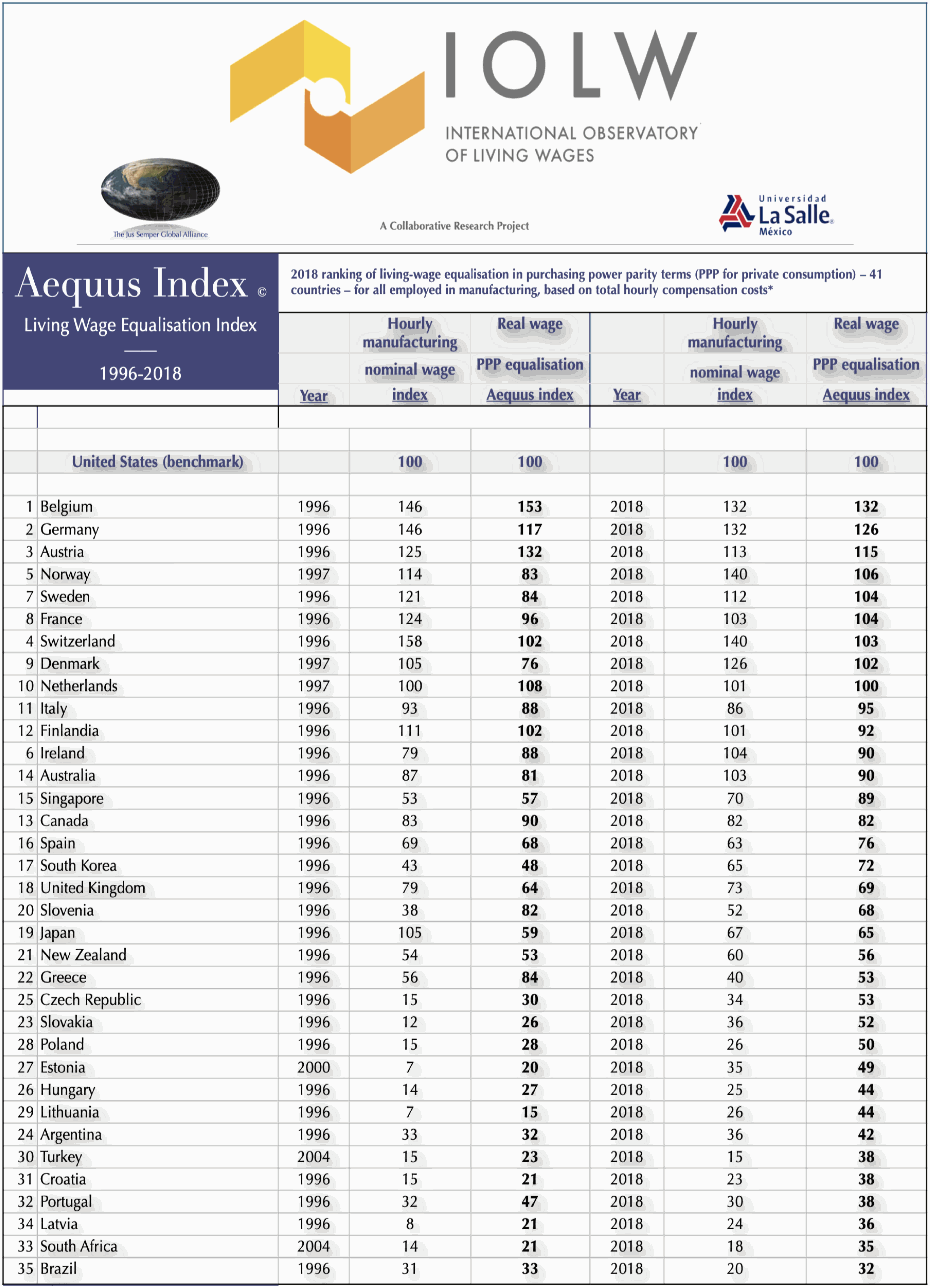From inception, TLWNSI developed its living-wage equalisation index, which measures how close the real wages of manufacturing workers in a specific country are to those of equivalent workers in the U.S. in purchasing-power-parity terms. The index exposes either the size of the gap or, in some countries, the true compensation advantage that real wages have over the wages of equivalent U.S. workers. Given that in 2011 we expanded our list of 13 economies included in our living-wage assessments to up to 34 economies, we decided to convey the most relevant indicator of our work in a very explicit manner. Hence we have named our index the "Aequus Index", Latin for "equal" or "balanced", which accurately reflects the purpose of our index.
In doing so we provide two indices. The first index measures wage differences for all employees in the manufacturing sector, which includes all persons employed full or part time in an establishment during a specified payroll period. The second index measures differences for production workers, which refers to only those employees who are engaged in activities directly or closely related to the production process. Both criteria belong to the methodology used by the Bureau of Labour Statistics (BLS) of the U.S. Department of Labour, and The Conference Board, our sources for all nominal wages included in the indices. Yet, this is the last time that we produce the Aequus Index for production workers, the same measurement that we have assessed for 12 economies. The BLS has decided to no longer update wage data for production workers. We will, however, maintain this table readily available, given that it provides wage data as far back as 1975, allowing us to provide a comparison for many countries between that year and, in most instances, 2009. The index for all employees dates back, depending on the country, to 1996 and, except for India and China, compares the benchmark year with 2017 and will continue to be updated every year. India and China's wage data is currently available for the periods 2000-2018 and 2002-2018 respectively. A word of caution, nonetheless, is required with these data, for India and China data gathered by the BLS are not fully comparable to the rest of countries due to some inconsistencies in methodology. However, given that in both cases the BLS argues that this does not substantially affect the hourly compensation estimates, rough comparisons can still be made, and thus, we have decided to include them in our Aequus Index. |










